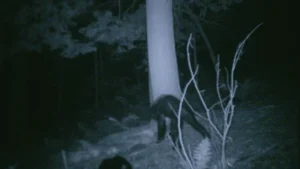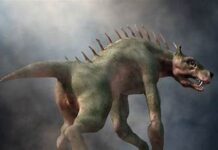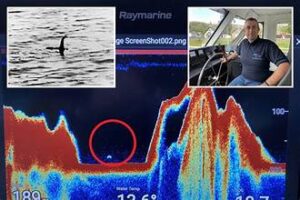The legend of the Loch Ness Monster has captivated the imaginations of people worldwide for nearly a century. Nestled in the Scottish Highlands, Loch Ness has been the subject of countless expeditions, folklore, and debates, as enthusiasts from all walks of life continue their quest to prove the existence of a cryptid that defies explanation. In 2024, the Loch Ness Expedition marked a new chapter in this ongoing mystery, unveiling findings that have reignited the curiosity of cryptid enthusiasts. This article dives into the latest discoveries, technological advancements, and what they mean for the future of cryptozoology.
The History of the Loch Ness Monster
The tale of the Loch Ness Monster, affectionately known as “Nessie,” first gained widespread attention in 1933 when George Spicer and his wife reported seeing a large, unknown creature cross in front of their car near Loch Ness. This report triggered a media frenzy and led to numerous subsequent sightings, the most famous being the 1934 “Surgeon’s Photograph,” which, although later debunked as a hoax, cemented Nessie in popular culture.
Despite the debunking of various photos and videos, belief in Nessie remains strong. For decades, cryptid hunters, scientists, and curious tourists have scoured the deep waters of Loch Ness, employing everything from sonar equipment to underwater cameras in hopes of capturing definitive evidence of the elusive creature.
Advances in Technology for Cryptid Hunting
In 2024, the tools available to researchers have evolved significantly compared to earlier expeditions. Sonar mapping technology, DNA analysis, and submersible drones have replaced rudimentary cameras and nets, providing more detailed data than ever before. The 2024 Loch Ness Expedition leveraged cutting-edge technologies in its pursuit of Nessie, bringing a scientific rigor to what was once considered pseudoscience.
Sonar Mapping and Drones
The waters of Loch Ness, known for their murkiness and vast depths, make traditional exploration difficult. However, sonar technology has revolutionized the search for large underwater creatures. In this latest expedition, sonar mapping allowed researchers to create a detailed 3D model of the loch’s floor, identifying anomalies that could indicate something unusual lurking in the depths. Submersible drones equipped with high-definition cameras and sensors further aided the mission, capturing video footage of the loch’s underwater environment in areas that were previously inaccessible.
Environmental DNA (eDNA) Analysis
One of the most promising innovations in cryptid research is environmental DNA (eDNA) sampling. This technique involves collecting water samples and analyzing the genetic material left behind by organisms, such as skin cells or waste. The 2024 Loch Ness Expedition took multiple eDNA samples from various parts of the loch to identify any unique or unknown species present in the waters. In cryptozoology, this tool offers new hope for finding elusive creatures like Nessie without the need for direct visual confirmation.
Key Discoveries from the 2024 Loch Ness Expedition
The 2024 expedition made several intriguing discoveries, sparking renewed excitement among cryptid enthusiasts and skeptics alike. While no definitive proof of Nessie’s existence was found, the results of the investigation provided more questions than answers.
Unexplained Sonar Anomalies
One of the most exciting developments came from sonar readings that detected large, moving objects deep within the loch. These anomalies measured over 30 feet in length, moving at a slow, deliberate pace. While scientists were cautious about attributing these findings to a cryptid, the data has nonetheless intrigued researchers. The team has ruled out known aquatic animals such as large fish or seals, but the possibility of an unknown species remains open.
eDNA Results
Perhaps the most groundbreaking aspect of the expedition was the environmental DNA analysis. Although the results are still being fully studied, early findings have revealed DNA signatures from species that are not native to Loch Ness. This raises the possibility that previously unknown animals, potentially migratory or introduced by human activity, may inhabit the loch. Cryptid enthusiasts point to these unknown species as possible explanations for some of the sightings over the years.
However, the analysis also detected the presence of eel DNA in significant quantities, reigniting the long-standing theory that the Loch Ness Monster could be a giant eel. While the presence of eels is not unusual in Loch Ness, the size of the creatures detected by sonar suggests something much larger than typical eels, leading to speculation about whether a rare, oversized specimen could be responsible for some of the Nessie sightings.
The Significance for Cryptid Enthusiasts
For cryptid enthusiasts, the 2024 Loch Ness Expedition represents a major step forward. Unlike earlier expeditions, which often relied on anecdotal evidence or grainy photographs, this investigation employed advanced scientific methods, giving credibility to the search for cryptids. The unexplained sonar anomalies and the discovery of unknown DNA signatures offer tantalizing hints that there is still much to learn about Loch Ness and its potential inhabitants.
The Role of Cryptozoology in Modern Science
Cryptozoology, the study of creatures whose existence is unproven, has often been dismissed as fringe science. However, as the tools for exploring the natural world become more sophisticated, the line between cryptozoology and mainstream biology is beginning to blur. The 2024 Loch Ness Expedition has demonstrated that serious scientific inquiry can be applied to subjects that have traditionally been viewed with skepticism.
Enthusiasts argue that many animals, once thought to be mythological, were eventually discovered and classified. For example, the giant squid, once considered a sea monster of legend, was scientifically documented in the 19th century. The coelacanth, a fish thought to be extinct for millions of years, was discovered alive off the coast of South Africa in 1938. Cryptid hunters hope that Nessie could one day join the ranks of these rediscovered species.
What’s Next for the Search?
The discoveries made during the 2024 expedition have spurred plans for further research. Scientists are already discussing additional sonar scans and deeper dives into the loch’s most inaccessible regions. There is also a push to conduct more comprehensive eDNA studies, especially focusing on parts of the loch that have yielded unusual genetic material.
Meanwhile, cryptid enthusiasts remain undeterred in their pursuit. For many, the mystery of Loch Ness is not just about finding a monster but about the thrill of exploration and discovery. As long as there are questions left unanswered, the search for Nessie will continue, with each new expedition bringing the possibility of finally solving one of the world’s most enduring mysteries.
Conclusion
The 2024 Loch Ness Expedition has reignited the debate about the existence of cryptids like the Loch Ness Monster. With the aid of modern technology, researchers have uncovered new data that adds to the mystery surrounding Loch Ness. While no definitive proof of Nessie has been found, the unexplained sonar anomalies and the presence of unknown species in the loch’s waters leave the door open for future discoveries.


















